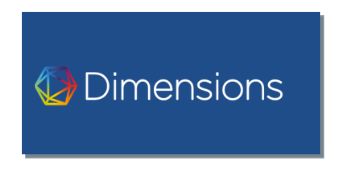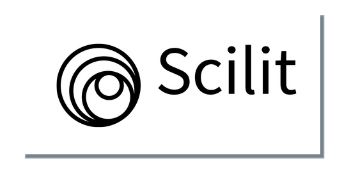Tranexamic Acid in Dermatology: A Review
DOI:
https://doi.org/10.11594/jk-risk.01.3.5Keywords:
tranexamic acid, chronic urticaria, melasmaAbstract
Tranexamic Acid, a synthetic lysine-analogue antifibrinolytic, was first patented in 1957. In the beginning, It is indicated for use in certain conditions with abnormal bleeding or bleeding tendencies in which local or systemic hyperfibrinolysis is considered to be involved. Recently its use has been increasing in the field of dermatology especially for use in chronic urticaria and angioedema, as well as melasma. Tranexamic acid is an inhibitor of plasmin, and it is a synthetic derivative of the amino acid lysine that reversibly blocks binding sites on the plasminogen molecule, inhibiting the plasminogen activator from converting plasminogen to plasmin thereby preventing degradation of the fibrin clot. Tranexamic acid can also reduce the release of plasmin-mediated vasoactive peptides such as bradykinin and histamine so that it can help control the symptoms of urticaria and angioedema. Tranexamic acid has an important role in melasma by reducing plasmin activation in UV-exposed skin, thereby inhibiting the release of arachidonic acid and prostaglandin E2, which in turn will inhibit the melanogenesis process. Tranexamic acid has been tried topically, orally, and intradermally in the treatment of dermatological disorder with minimal adverse effects. However, more randomized trials are needed to fully elucidate the exact mechanism of action, ideal route, frequency, and duration of administration of the drug, along with its potential to treat dermatological disorders.
Downloads
References
Rossaint R, Bouillon B, Cerny V, Coats TJ, Du-ranteau J, Fernández-Mondéjar E, et al. The European guideline on management of ma-jor bleeding and coagulopathy following trauma: fourth edition. Crit Care. 2016 Apr;20:100.
Forbat E, Al-Niaimi F, Ali FR. The emerging importance of tranexamic acid in dermatolo-gy. Clin Exp Dermatol. 2020 Jun;45(4):445–9.
Ng W, Jerath A, Wąsowicz M. Tranexamic ac-id: a clinical review. Anaesthesiol Intensive Ther. 2015;47(4):339–50.
Longhurst H, Zinser E. Prophylactic Therapy for Hereditary Angioedema. Immunol Aller-gy Clin North Am. 2017 Aug 1;37:557–70.
Hon KL, Li JTS, Leung AKC, Lee VWY. Cur-rent and emerging pharmacotherapy for chronic spontaneous Urticaria: a focus on non-biological therapeutics. Expert Opin Pharmacother. 2021 Mar;22(4):497–509.
Bala HR, Lee S, Wong C, Pandya AG, Ro-drigues M. Oral Tranexamic Acid for the Treatment of Melasma: A Review. Dermato-logic Surg Off Publ Am Soc Dermatologic Surg [et al]. 2018 Jun;44(6):814–25.
Kim SJ, Park J-Y, Shibata T, Fujiwara R, Kang HY. Efficacy and possible mechanisms of top-ical tranexamic acid in melasma. Clin Exp Dermatol. 2016 Jul;41(5):480–5.
Ker K, Roberts I. Tranexamic acid for surgi-cal bleeding. Vol. 349, BMJ (Clinical research ed.). England; 2014. p. g4934.
McCormack PL. Tranexamic acid: a review of its use in the treatment of hyperfibrinolysis. Drugs. 2012 Mar;72(5):585–617.
Jerath A, Yang QJ, Pang KS, Looby N, Reyes-Garces N, Vasiljevic T, et al. Tranexamic Acid Dosing for Cardiac Surgical Patients With Chronic Renal Dysfunction: A New Dosing Regimen. Anesth Analg. 2018 Dec;127(6):1323–32.
Gilad O, Merlob P, Stahl B, Klinger G. Out-come following tranexamic acid exposure during breastfeeding. Breastfeed Med Off J Acad Breastfeed Med. 2014 Oct;9(8):407–10.
Roland MD Couturier, Grassin-Delyle S. Tranexamic Acid. Anesth Analg. 2014;119(2):498–9.
Johnson DJ, Johnson CC, Goobie SM, Nami N, Wetzler JA, Sponseller PD, et al. High-dose Versus Low-dose Tranexamic Acid to Reduce Transfusion Requirements in Pediatric Sco-liosis Surgery. J Pediatr Orthop. 2017 Dec;37(8):e552–7.
Lier H, Maegele M, Shander A. Tranexamic Acid for Acute Hemorrhage: A Narrative Re-view of Landmark Studies and a Critical Re-appraisal of Its Use Over the Last Decade. Anesth Analg. 2019 Dec;129(6):1574–84.
Budamakuntla L, Loganathan E, Suresh DH, Shanmugam S, Suryanarayan S, Dongare A, et al. A Randomised, Open-label, Compara-tive Study of Tranexamic Acid Microinjec-tions and Tranexamic Acid with Micronee-dling in Patients with Melasma. J Cutan Aes-thet Surg. 2013 Jul;6(3):139–43.
Zuberbier T, Aberer W, Asero R, Abdul Latiff AH, Baker D, Ballmer-Weber B, et al. The EAACI/GA2LEN/EDF/WAO guideline for the definition, classification, diagnosis and man-agement of urticaria. Allergy. 2018 Jul;73(7):1393–414.
Sánchez-Borges M, Asero R, Ansotegui IJ, Baiardini I, Bernstein JA, Canonica GW, et al. Diagnosis and treatment of urticaria and an-gioedema: a worldwide perspective. World Allergy Organ J [Internet]. 2012 Nov;5(11):125–47. Available from: https://pubmed.ncbi.nlm.nih.gov/23282382
Jain S. Pathogenesis of chronic urticaria: an overview. Dermatol Res Pract. 2014;2014:674709.
Church MK, Kolkhir P, Metz M, Maurer M. The role and relevance of mast cells in urti-caria. Immunol Rev. 2018 Mar;282(1):232–47.
Zanichelli A, Vacchini R, Badini M, Penna V, Cicardi M. Standard care impact on angi-oedema because of hereditary C1 inhibitor deficiency: a 21-month prospective study in a cohort of 103 patients. Allergy. 2011 Feb;66(2):192–6.
Hide M. [JAPANESE GUIDELINES FOR DIAG-NOSIS AND TREATMENT OF URTICARIA 2018]. Arerugi. 2018;67(10):1394–8.
Poojary S, Minni K. Tranexamic Acid in Me-lasma: A Review. J Pigment Disord. 2015;2(12):2–5.
Tse TW, Hui E. Tranexamic acid: an im-portant adjuvant in the treatment of me-lasma. J Cosmet Dermatol. 2013 Mar;12(1):57–66.
Na JI, Choi SY, Yang SH, Choi HR, Kang HY, Park K-C. Effect of tranexamic acid on me-lasma: a clinical trial with histological evalua-tion. J Eur Acad Dermatol Venereol. 2013 Aug;27(8):1035–9.
Liamis G, Filippatos TD, Elisaf MS. Evaluation and treatment of hypernatremia: a practical guide for physicians. Postgrad Med. 2016;128(3):299–306.
Del Rosario E, Florez-Pollack S, Zapata LJ, Hernandez K, Tovar-Garza A, Rodrigues M, et al. Randomized, placebo-controlled, dou-ble-blind study of oral tranexamic acid in the treatment of moderate-to-severe melasma. J Am Acad Dermatol. 2018 Feb;78(2):363–9.
Kwon S-H, Hwang Y-J, Lee S-K, Park K-C. Heterogeneous Pathology of Melasma and Its Clinical Implications. Int J Mol Sci. 2016 May;17(6).
Tan AWM, Sen P, Chua SH, Goh BK. Oral tranexamic acid lightens refractory melasma. Australas J Dermatol. 2017 Aug;58(3):e105–8.
Zhu C-Y, Li Y, Sun Q-N, Takada A, Kawada A. Analysis of the effect of different doses of oral tranexamic acid on melasma: a multi-centre prospective study. Eur J Dermatol. 2019 Feb;29(1):55–8.
Wu S, Shi H, Wu H, Yan S, Guo J, Sun Y, et al. Treatment of melasma with oral administra-tion of tranexamic acid. Aesthetic Plast Surg. 2012 Aug;36(4):964–70.
Ebrahimi B, Naeini FF. Topical tranexamic ac-id as a promising treatment for melasma. J Res Med Sci Off J Isfahan Univ Med Sci. 2014 Aug;19(8):753–7.
Downloads
Published
Issue
Section
License
Authors who publish with this journal agree to the following terms:
- Authors retain copyright and grant the journal the right of first publication with the work simultaneously licensed under a Creative Commons Attribution License that allows others to share the work with an acknowledgement of the work's authorship and initial publication in this journal.
- Authors can enter into separate, additional contractual arrangements for the non-exclusive distribution of the journal's published version of the work (e.g., post it to an institutional repository or publish it in a book), with an acknowledgement of its initial publication in this journal.
- Authors are permitted and encouraged to post their work online (e.g., in institutional repositories or on their website) before and during the submission process, as it can lead to productive exchanges and earlier and greater citation of published work (See The Effect of Open Access).
















